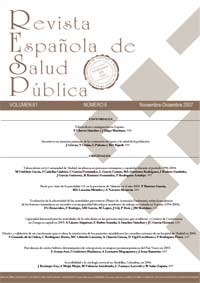Dependent Individuals Classification Based on the 1999 Disabilities, Impairments and Health Status Survey
Abstract
Background: In order to move to a system in which formal medical-social care is a priority, in which the institutions play a greater role, it is advisable to analyze the different actual situations of those individuals who are dependent. The objective of this study consists of classifying the dependent Spanish population into different groups, each of their own distinguishing characteristics. Methods: The data from the Disabilities, Deficiencies and Health Status Survey (Spanish National Institute of Statistics, 1999) related to the non-institionalized population over 6 years of age. Groups are configured using multivariate analysis techniques in terms of the age, sex, daily living activity-related disabilities, the severity thereof and the number of hours of care per week. Results: Nine statistically heterogeneous profiles were obtained. In the first three, with 341,262 individuals (24.5% of the total dependent population), the individuals in question were under 60 years of age. With the exception of one group, females were predominant (61% males), falling within the 13-36 age range. In the group least affected by lack of self-sufficiency (136,240 individuals), solely 26% of those comprising this group had problems getting around (maximum degree of severity in 7%), regarding care, 25% (maximum degree of severity in 10%) and only 32% need more than 15 hours of care per week. Most thereof (74%) are females within the 82-90 age range. Conclusions: The dependent Spanish population is revealed to be in different situations related to different categories in terms of age, sex, number and severity of the daily living activities affected...Downloads
Published
2008-03-18
Issue
Section
ORIGINALS

